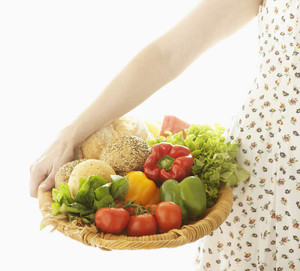05 Oct Fri 2012
Meet the Winter Team
Last week I shared in this post that I’m planning to grow vegetables this winter. For those of you who are following and would like to try to do the same, I thought I’d share just exactly what we’re planting.
But before we get to the starting lineup, I wanted to quickly share some information about the garden layout for winter. The winter garden will consist of six 4’ x 12’ raised beds which have been converted into “hot beds” using manure, compost and plastic row covers. Our crop selections include cool weather plants and each crop is neighbor to a suitable companion plant. The winter garden rotation is counterclockwise, meaning that whatever I plant in Bed B this year I’ll be planting in Bed A next year. This counterclockwise rotation syncs with the clockwise rotation of the summer garden layout so that no matter the season, the crop I’m planting will not be placed in space that was previously occupied by a plant in the same family. This is essential to natural growing practices because plants of the same family use the same nutrients and can deplete the soil. Also, planting crops in the same place every year makes it really easy for pests and diseases to know where to find your food!
For a visual representation of the garden layout, click here. Please note that you’ll have to zoom in quite a bit (400%) to see the details. The empty squares are ‘placeholders’ for the crops that will be there in the summer. Cells that look like they have little lightening bolts are crops which I’m planting in fall to overwinter and harvest in the spring. The squares outlined in red will be ‘hotbed squares’. All of the winter spaces would have been hotbeds except that I got a little ahead of myself and planted/transplanted some crops that now cannot be disturbed. Oops.
Meet the Team
Here are the major players in our winter garden for 2012/2013. For purchase info, click on the crop name.
To see more pictures and read the rest of this article, click here.


